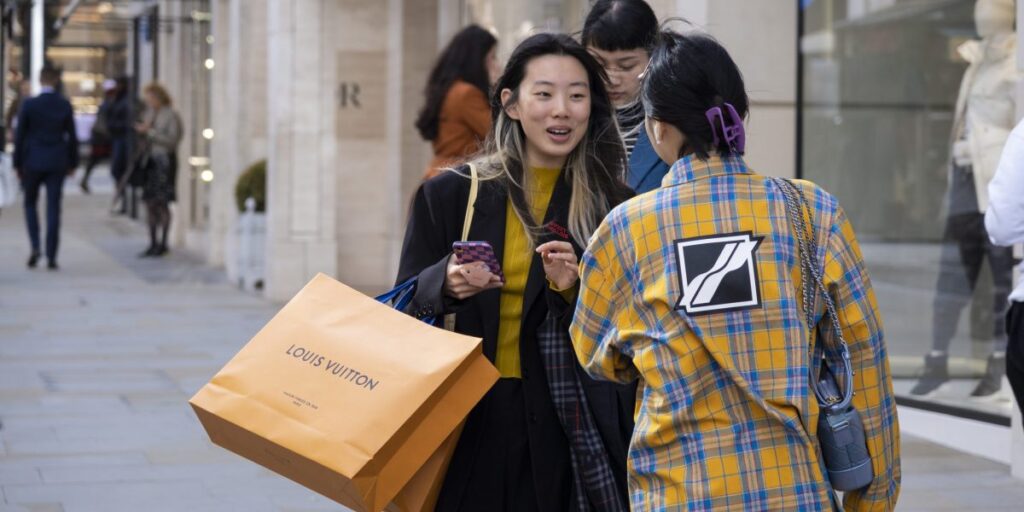There’s no money left. Despite strong performance in recent years, the personal luxury goods market is expected to slow this year for the first time since the Great Recession of 2009. 50 million luxury goods consumers have now given up on purchases of designer bags, scarves, watches and more, or have seen prices drop, warns Bain & Company’s new annual luxury goods report. There is.
Only one-third of luxury brands will end the year with positive growth, down from two-thirds last year, Bain said.
Looking ahead, he said brands will need to re-evaluate their value proposition, primarily for Gen Z, and continue to meet rising expectations in order to survive.
how? Marie Driscoll, a stock analyst specializing in luxury retail, told Fortune magazine that reinvention is key.
“Let’s go back to the books and make our products more inspirational and our shopping experience great,” Driscoll said. “We must always approach consumers from new angles and surprise and delight them.”
“You can have a great ice cream sundae, but by the fifth time you eat it, you’re tired of it,” Driscoll added.
break a promise to a shopper
Driscoll said brands are, in some ways, breaking promises to consumers.
“Since 2019, the overall price of luxury goods has increased without a corresponding increase in the innovation, service, quality and appeal that luxury brands have to offer,” Driscoll added. “It hit consumers hard this year, and we felt the impact to the fullest.”
This perhaps explains why luxury brand giants including LVMH (which owns Dior and Louis Vuitton), Burberry and Kering (which owns YSL and Gucci) have missed their revenue targets this year. In fact, LVMH was dethroned as Europe’s most valuable company in September 2023 by Novo Nordisk, the maker of Ozempic.
Not only are customers held back by shocking prices that their paychecks can barely keep up with, they’re also likely to be unimpressed with the products these luxury brands offer.
Some more than others. During New York Fashion Week in September, Michael Kors, the founder of his eponymous brand, pointed to fast fashion and social media influencers and tried to explain a 14% year-over-year revenue decline by saying, “Brand fatigue.” He said he was suffering from “. You can follow trends much faster.
“Luxury consumers want things that are rare, unique, custom, beautiful, and especially their own,” retail analyst Hita Herzog told Fortune. “While some luxury brands offer basic customization, almost all luxury brands have the ability to create one-off items for VIP customers or for ambitious customers to eventually own. There’s no way to create something that you can strive for.
One big exception is Hermès, which has grown rapidly this year while its peers have struggled. Herzog said this is largely thanks to the company’s Birkin bags, which have “long waiting lists and requirements for how much money a customer will spend before consulting a store about purchasing a bag. and benchmarks. Herzog said that exclusivity “creates a mystique in owning something rare, and when you see the price tag it gives you the feeling that it’s worth something.”
china effect
China has been driving luxury growth since 2000 until the pandemic hit. “Global luxury growth benefited from the growth of China’s middle class, its aspirational class, and those who became billionaires,” Driscoll said.
LVMH, a bellwether in the larger luxury sector, posted a 3% sales decline last month, mainly due to the continued impact of inflation on consumer behavior, particularly in the important Chinese market. Meanwhile, Kering reported a 15% year-over-year decline last month.
Bain said the sharp decline in spending in China was due to “weak consumer confidence,” but it was not alone.
Globally, the current economic environment is making many “aspirational” shoppers more cautious in their spending, Nicolas Linas Carrizosa, a luxury-focused BCG partner, told Fortune. spoke. “They’re either prioritizing financial investments or they’re prioritizing spending on other categories that they think are more important to them.”
Overall, the overall luxury goods sector is expected to decline by 2% in 2024, Bain said.
But that doesn’t mean consumers will stop spending altogether. Travel, fine wine and food, and automotive sectors all reported modest growth this year.
Moreover, a “moderate recovery” remains likely in the second half of 2025 in China, Europe, the United States, and especially Japan. In Japan, shoppers are the lucky beneficiaries of a favorable exchange rate.



